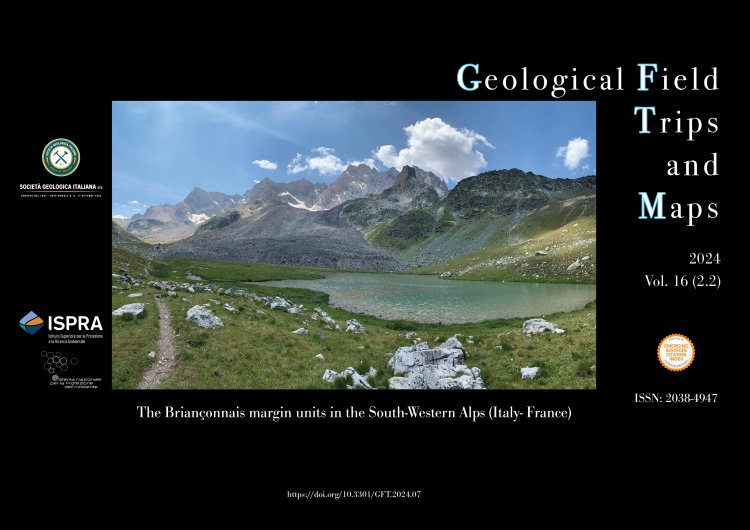
Volume 16 (2.2)/2024
The Briançonnais margin units in the South-Western Alps (Italy-France)
DOI: https://doi.org/10.3301/GFT.2024.07 - Pages: 1-61
Davide Dana1
1Dipartimento di Scienze Della Terra, Università di Torino, via Valperga Caluso 35, 10125, Turin, Italy.
Corresponding author e-mail: davide.dana@unito.it
Corresponding author e-mail: davide.dana@unito.it
Abstract
In the Cottian Alps, across the Italian-French boundary, several continental-derived tectonic units are stacked together with Alpine Tethys-derived units. The continental units derive from the passive European margin, particularly from its most distal part that was subducted and exhumed during the Alpine orogeny. These units are generally grouped as Briançonnais s.l. units (a term that includes the Classic Briançonnais Units of the Briançon area, the Acceglio-type, the Pre-Piemonte and the Internal Crystalline Massif Units), which comprise metasedimentary successions of Carboniferous to Eocene age and polycyclic crystalline basement units, experiencing various peak metamorphic conditions between lowermost greenschist and ultra-high pressure (UHP) conditions. In the study area, located well south of Briançon, oceanic and continental units are interleaved, resulting in a complex structural architecture dominated by large-scale structures. This field trip guide, organised in two days and 16 stops, proposes an itinerary of great interest between the Maira and Ubaye Valleys (the border area between Italy and France) where these different units can be observed. The proposed trip leads to the exploration of many interesting outcrops on the meso- and large-scale, offering the opportunity to observe the main aspects of the structural architecture of a tectonically complex area. Furthermore, some outcrops will reveal details about the paleogeographic and stratigraphic evolution of the European passive margin units. The itinerary is aimed at both specialists and those interested in the Alpine regional geology. This field trip also makes it possible to further enhance a less frequented part, rich in interesting geo-touristic sites, of the Maira and Ubaye Valleys.
Keywords
